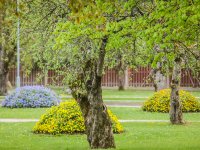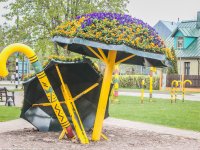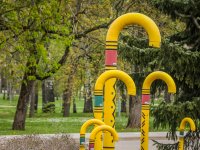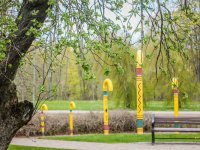
It was established in 2007 as a tribute to Sigulda’s most popular souvenir. Walking-stick making has very deep roots and a more than 200-year long history in Sigulda. Guide-books of the 19th century says that "for long walks n Sigulda trails the walking-stick, which you can get from some boy, might be useful". Even if there is no practical use of walking-stick nowadays, it is still the most popular souvenir. In the Walking-stick workshop which is located in Sigulda Castle quarter, it is possible to see the process of walking-stick making, also you can make your own souvenir - walking-stick.
| Address | At the crossroads of Cēsu and Poruka ielas |
| Coordinates | 57.161768 24.849483 |
| Phone | +371 67971335 |
| info@sigulda.lv | |
| www | www.tourism.sigulda.lv |
Traveler’s guidebooks of the 19th century proclaim 'the walking-stick could be mighty handy when walking around the valley. You may buy one from any boy in the area.' Initially, the sticks were very simple; one end of a hazel tree or a buckthorn branch was peeled and bent for use as a handle. The remainder of the stick remained unpeeled. Later at the beginning of the 20th century, as Sigulda became a center for summer lodging and recreation, leisure walks along the alpine trails set up by Sigulda manor owner Duke Kropotkin grew in popularity. Thus making and selling canes became a notable source of income for local peasants.
Weekend trips to Sigulda became very common in the 1920s and 30’s as traveling and getting to know one's land was notably promoted. The demand for walking sticks grew exponentially.
The walking sticks can be made from hazelnut trees, juniper, buckthorn, willow, cherry wood, or any other tree that is flexible enough to bend into a handle. First, the stick is steamed, then peeled, bent, and fixed around a wood mold. When the cane has dried, it is then decorated, painted, and varnished.
Originally, the steaming, peeling, polishing, and bending was the work of men, and the decoration, painting, and varnishing was done by women and teens. The upper-class gentleman wanted their walking-sticks colorful and appealing.
During the Soviet era after WWII tourism re-surged and the making of walking-sticks expanded again. Modern ink made canes more colorful. A special wood-burning tool was used to create Latvian symbols. Other popular patterns included needles, waves, suns, dots, and rhomboid combinations as well as some unique to Sigulda such as a sawtooth, butterfly, bug, and devil's head.
The stick making trade was passed on from one generation to another. Then, as now, entire families were devoted to doing just that which means that even today you can still bring home a cherished memento from Sigulda: a walking stick.































